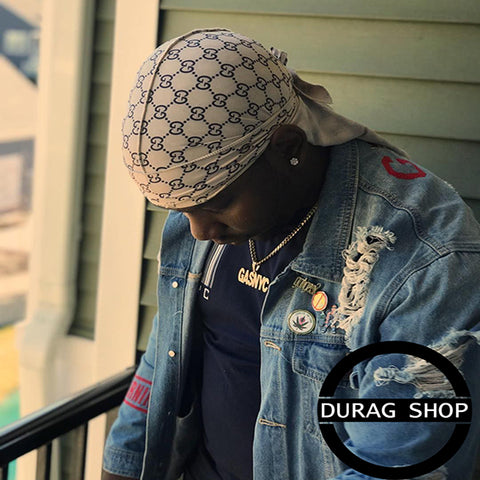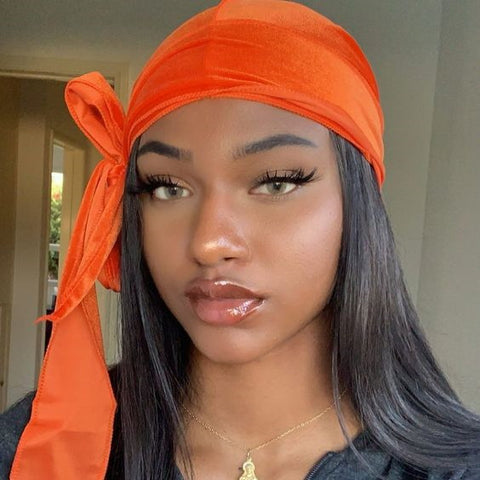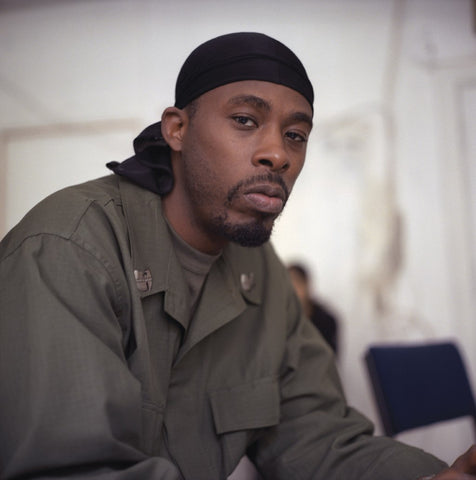
The history of durag
Fashion accessories although many have their own history and have been marked by great periods of it. Jewellery, belts, bracelets and many others are a part of our outfits every day for a long time but we will see that the accessory we are interested in is not as old as it looks and is full of stories.
What is a durag ?
Before getting to the heart of the matter, it is important to recall what this accessory, so new and mysterious for some, is. A durag is a scarf that can be used for different reasons and different purposes; appreciated as a fashion accessory to complete its outfit it is also worn for its practicality, that is to say, to keep the hair in place or to make specific haircuts that we will see later in this article.
The appearance of durag
The first appearance of the durag dates back to dark years of American history, during the 19th century durags were mainly worn by African-American workers and slaves during hard working hours. It is only at the beginning of the 1930's during the Harlem Renaissance and the Great Depression that durag evolved as an accessory even if its primary function remains utilitarian, i.e. to maintain the hair. Just after the black American movement at the end of the 1960's it took a totally different turn and became a fashion accessory adored by African Americans, rappers, athletes of any age group and became a true symbol of this new movement, a feeling of belonging was then created around this brand new accessory that knows how to make people talk about it.
The durag controversy
The appearance of durag was so strong and quickly entrenched in American youth that some American states decided to prohibit the wearing of this accessory in schools as part of a policy of dress codes in schools but above all, because the image of durag is associated with gang members or bandits which gives it this criminal aspect and therefore a very negative image vis-à-vis a large part of the American population.
However it does not stop there, it will also be banned by the National Football League in 2001 and by the National Basketball Association better known as the NBA in 2005. Since the majority of Durag players are African-American, these bans leave doubt as to the motives for these acts; for some it is not a question of banning Durag for the image it reflects but simply of demonizing once again a new form of African-American culture and therefore see these new measures as a direct and racist attack.

It thus becomes much more than a simple fashion accessory and represents African-American culture, it becomes a true symbol of this struggle and remains topical as we saw recently with Rihanna as the headliner of the famous Vogue magazine wearing a durag which made noise all over the world and stirred up debates in the United States. Accompanied by a committed speech pointing out the injustices Rihanna embodies a new form of political commitment aimed at changing mentalities and moving things forward.

Durag today
The durag has gradually settled in and has found its place in American culture and is now making a comeback in fashion. The use of durag as a head accessory is becoming more and more famous among American rappers such as Ski Mask or A$ap Ferg and many others. A great diversity in the choice of colours has been established but the black durag remains the favourite element of this new accessory which is gaining in popularity as time goes by.

But that's not all, this incredible accessory that is the durag is also used to create a haircut called "waves" which consists of compressing your hair and then continuously brushing it in one direction in order to wave it and give it this wave effect.






Anon
Le durag ça me fait penser à ce que les femmes africaines mettent sur leur têtes donc moi je pense que c’est juste une “tradition” qui est resté je pense fortement que ça ne vient pas de l’Amérique mais de l’Afrique et il y a d’autres choses comme ça qui viennent d’Afrique mais qui sont restés chez les noirs là-bas comme les locks ca vient d’Afrique moi mes ancêtres avaient cette coiffure même les femmes.